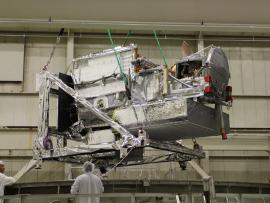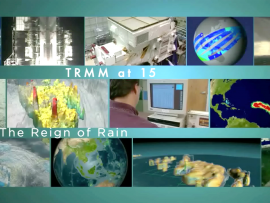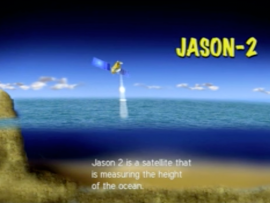Browse Satellites Resources
Browse Satellites Resources
Primary Topic:
Subtopics:
Type:
Summary:
The GPM Core Observatory being tested on the High Capacity Centrifuge at Goddard Space Flight Center.
Primary Topic:
Subtopics:
Type:
Standards:
Keywords:
Summary:
This animation shows the launch and deployment of the GPM Core Observatory. GPM is scheduled to launch in 2014 on an H-IIA rocket in Japan.
Primary Topic:
Subtopics:
Type:
Summary:
Watch the GPM Core Observatory being lowered into the Thermal Vacuum Chamber, which simulates the harsh conditions of space. Includes neat facts about GPM and the testing process.
Primary Topic:
Subtopics:
Type:
Keywords:
Summary:
This video celebrates the 15th anniversary of the Tropical Rainfall Measuring Mission (TRMM). Project Scientist Scott Braun looks back at TRMM's legacy and a few of the major scientific milestones the satellite has helped achieved.
Primary Topic:
Subtopics:
Type:
Keywords:
Summary:
Welcome to the Tour of the Electromagnetic Spectrum. This unique NASA resource on the web, in print, and with companion videos introduces electromagnetic waves, their behaviors, and how scientists visualize these data.
Primary Topic:
Subtopics:
Type:
Keywords:
Summary:
The activities in this guide will help students understand variations in environmental parameters by examining connections among different phenomena measured on local, regional and global scales.
Primary Topic:
Subtopics:
Type:
Keywords:
Summary:
Learn how NASA uses a data-collecting sensor, Clouds and Earth’s Radiant Energy System, or CERES, to study clouds and make accurate measurements of energy leaving Earth.
Primary Topic:
Subtopics:
Type:
Summary:
Learn how the satellite, Jason 2, is able to use radar waves to determine the height of sea levels and evaluate the effects of global warming.
Primary Topic:
Subtopics:
Type:
Keywords:
Summary:
Ocean circulation plays a key role in distributing solar energy and maintaining climate, by moving heat from Earth's equator to the poles. Aquarius salinity data, combined with data from other sensors, will give us a clearer picture of how the ocean works
Primary Topic:
Subtopics:
Type:
Keywords:
Summary:
Satellite Meteorology learning modules provide scientists and educators with exciting activities and hands-on tools for investigation, inquiry, analysis and stewardship.











